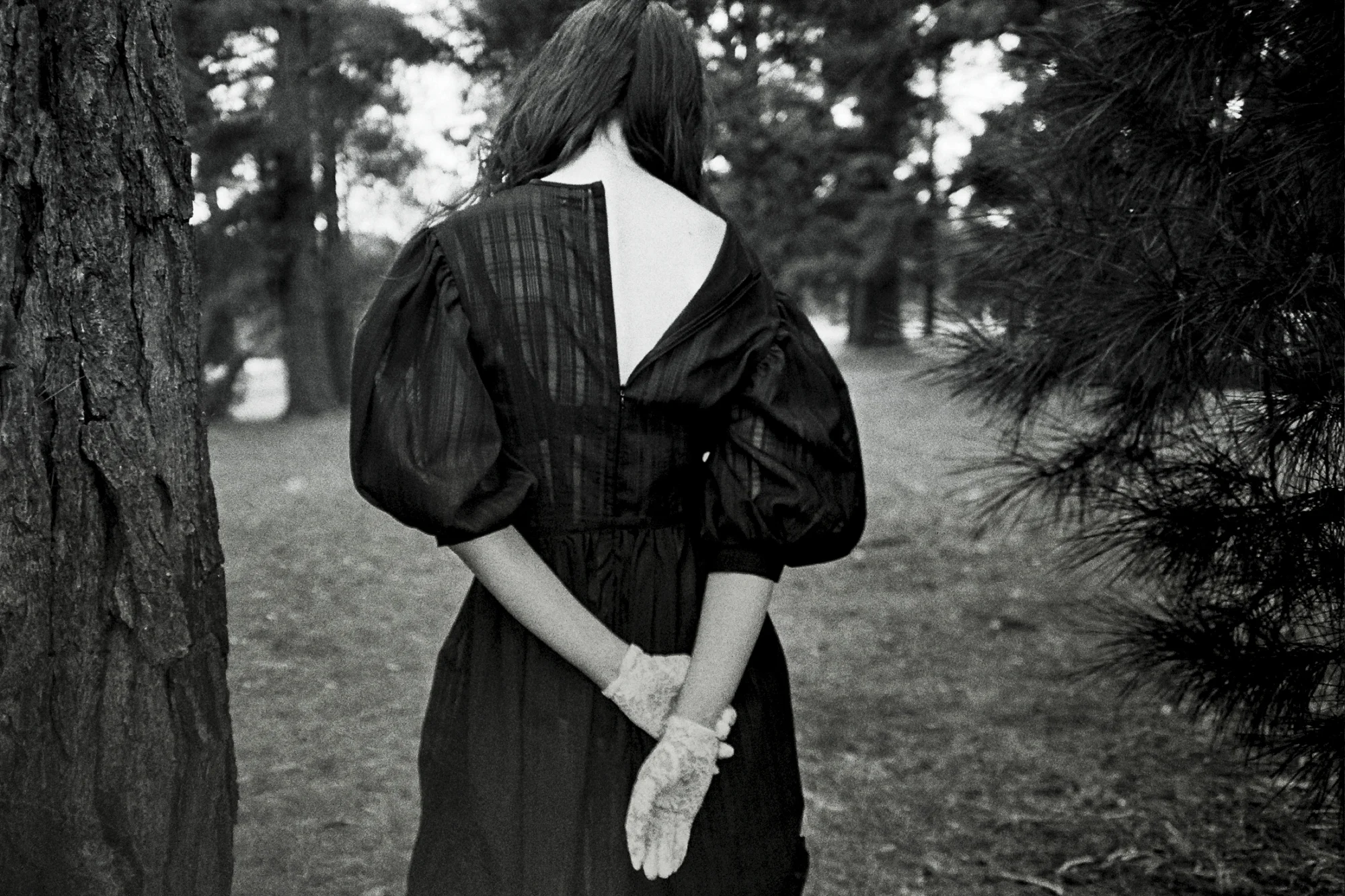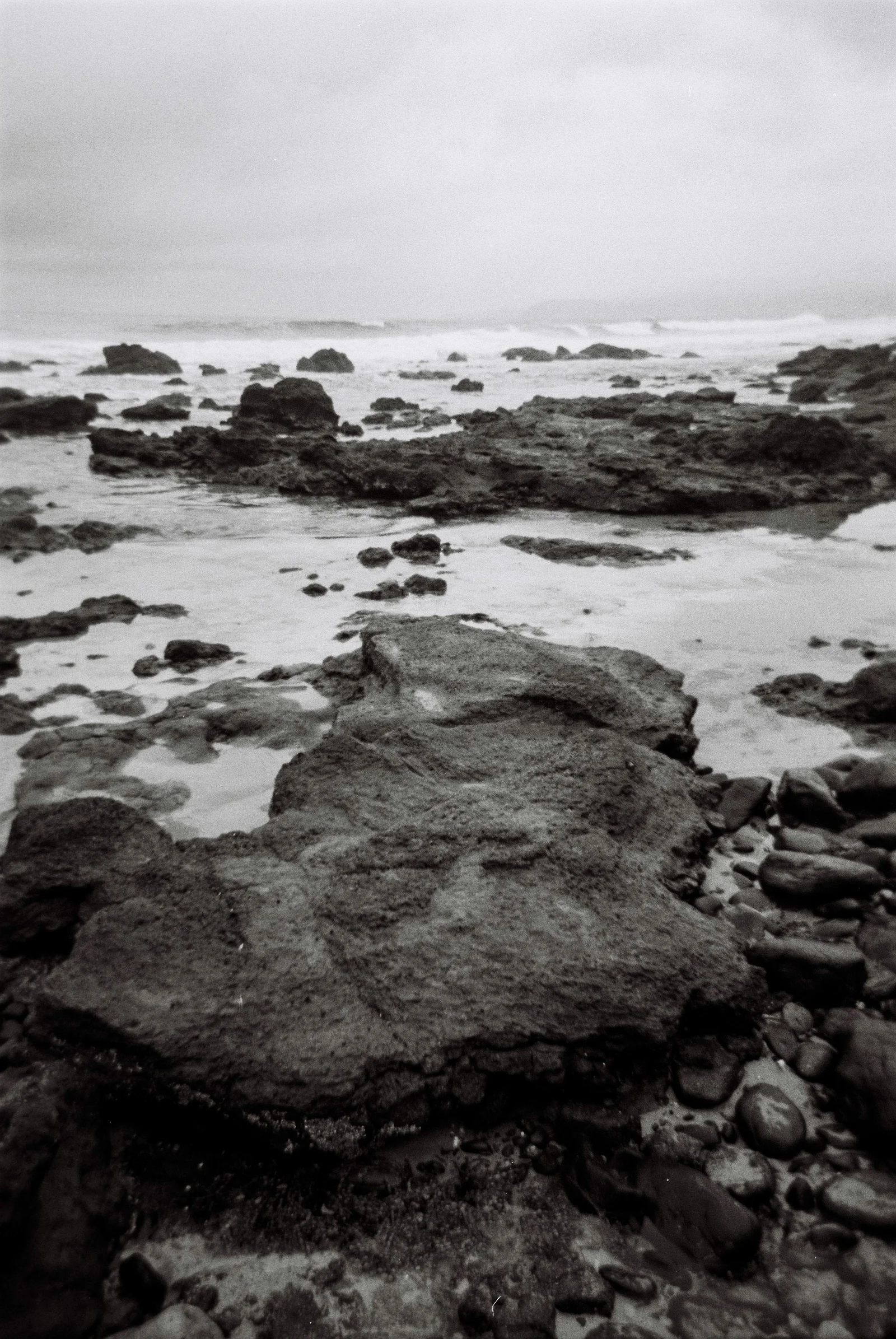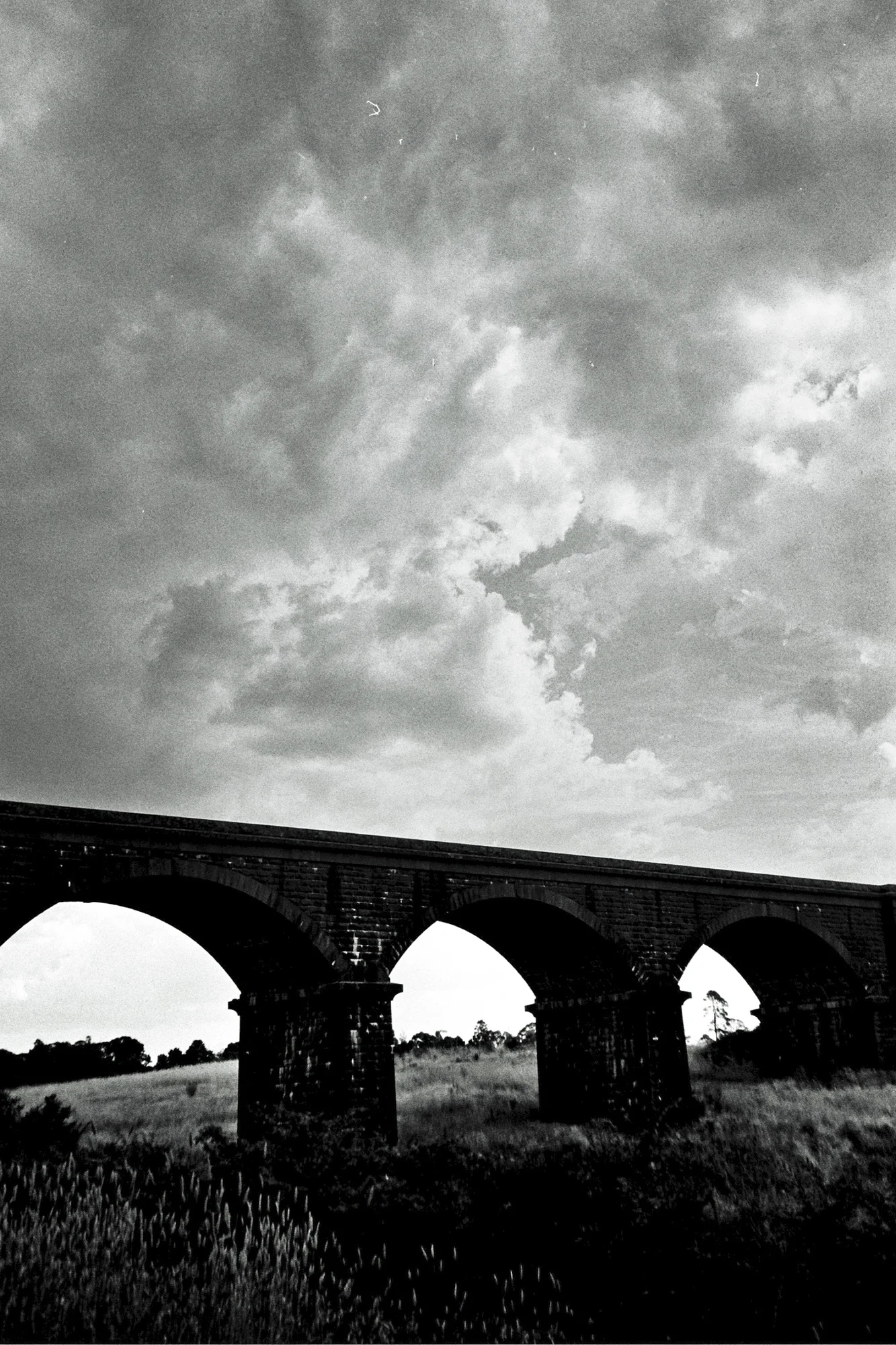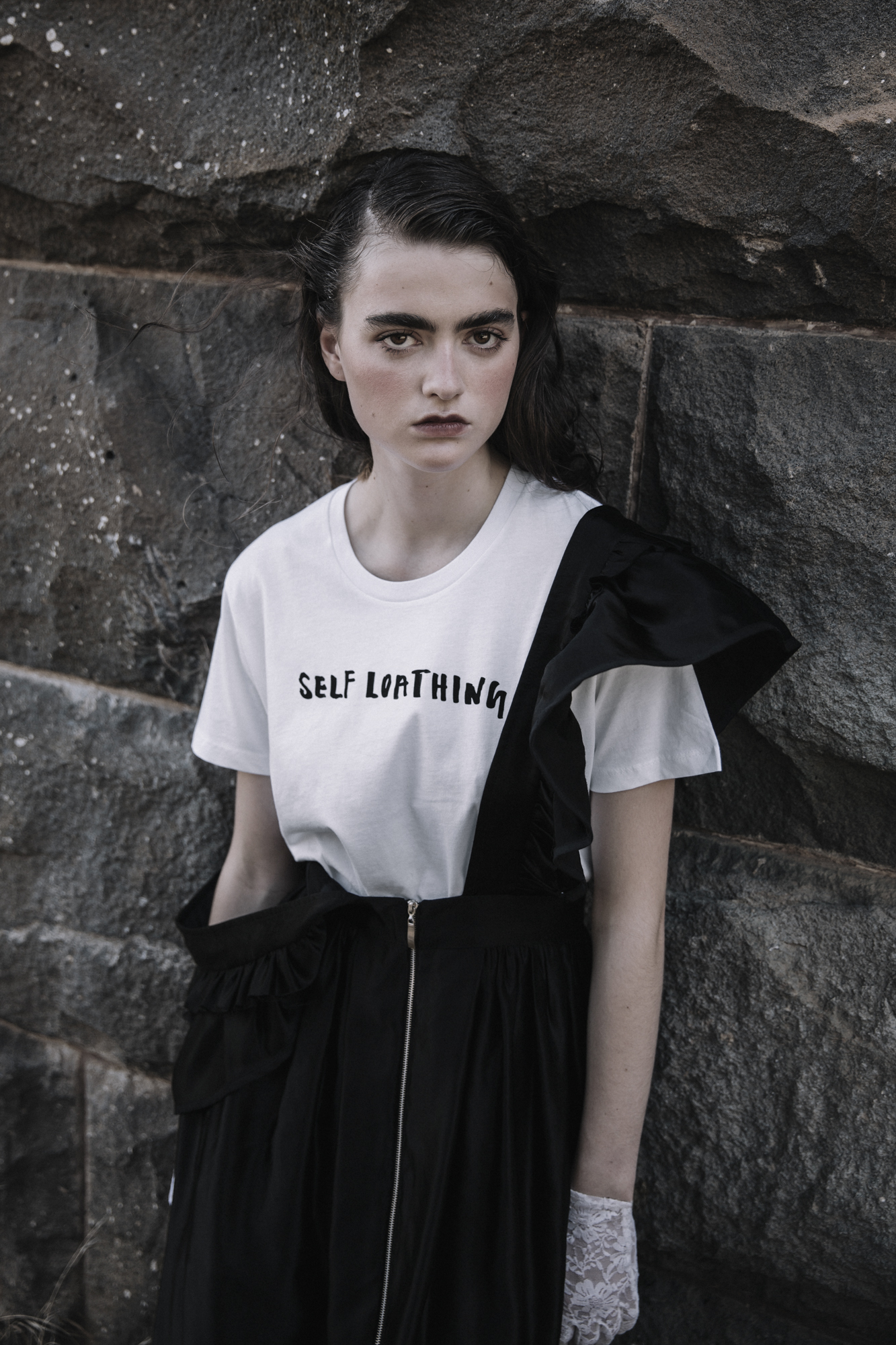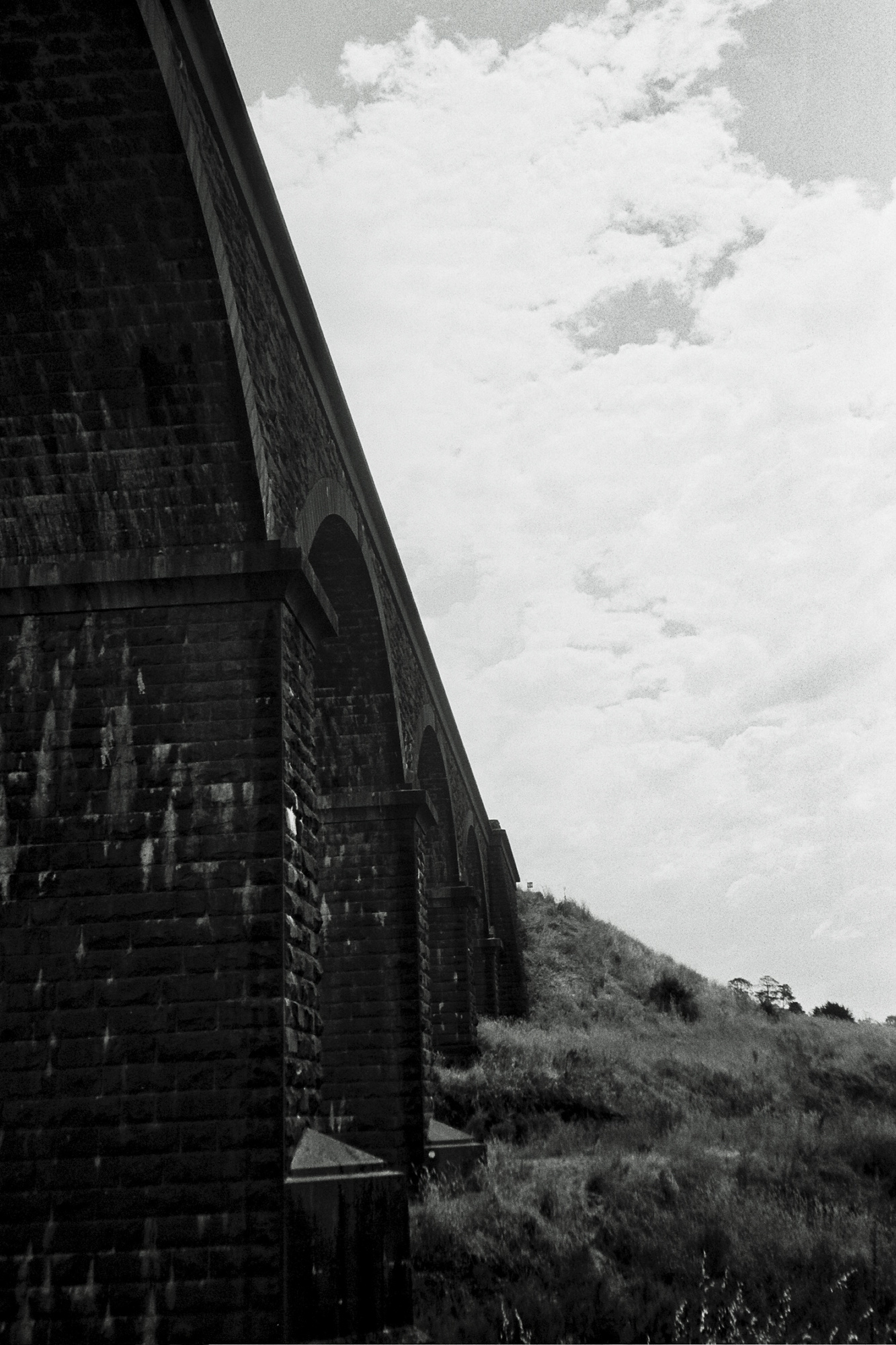How Kalaurie Connects With The Soul
"Black Mountain" Photography Vlad Savin . Beauty Rob Povey . Hairstylist Xeneb Allen . Model Imogen Tonkin At Azalea ModelsBeauty Rob Povey . Model Lauren Moody At Chadwicks
Interview Latoya P. Henry Photography Vlad Savin
We’re emotionally linked to the clothing we wear. Beyond staple items and trends, the garments we select express our emotions and personalities. Through garments you can gather several characteristics of the person wearing them. For emerging label KALAURIE, the designer utilizes creativity as therapy, achieving a clear awareness about herself. Then interpreting these emotions towards her designs. While she presents a dark fairytale, her design methods enhance a new chapter of design. Despite KALAURIE being a fresh brand, the designer understands the needs of today’s style audience, who are seeking timeless ensembles. Essentially Kalaurie is creating an open dialogue between her and the audience. Building a connection, which is stronger than simple attire, exposing what truly lies beneath the layers of a garment. Narrating a story that is personal, romantic, emotive and dark.
Who is KALAURIE and what triggers your creativity?
I’m Kalaurie, I graduated mid last year from the Royal Melbourne Institute of Technology with a Bachelor in Fashion (Design Technology) and I am the gal behind emerging womenswear label KALAURIE. I am triggered by feelings. I use my creativity as therapy- it helps me to learn about myself and understand my feelings and experiences. I would definitely describe myself as emotionally aware and I use that as fuel.
Explain a bit about your work process, what are the first steps you take when you’re developing a new collection?
My collections are about story telling, playing out a narrative. They are almost always inspired by my emotions and the experiences I encounter in life. It starts with whatever story I am looking to tell, whatever I am feeling or experiencing at the time. I research external influences, and then I draw. I bring ideas I’ve drawn onto the stand and drape. Then I draw some more and explore the shapes I’ve created and all their possibilities. I don’t design single pieces, and piece them together into outfits. I design outfits then break them down, looking at each element singularly. I think a lot about the styling of a garment when I design, including all the ways it could be worn and what with.
Are there any key characteristics behind your design aesthetic and describe the approach towards your latest collection “Black Mountain”?
Dark, romantic and emotive- It must be my German heritage showing through because it is very far from the signature “Australian” aesthetic.
“Black Mountain” is my first collection outside of the nurturing cocoon of university life. It’s about the next journey, the next stage of finding yourself and how confronting that is- climbing the ‘black mountain’ where we are confronted by our own insecurities, doubts and self loathing as we struggle towards the final destination that is self realization. All the pieces had to be journey fit, evoking a sense of purpose and freedom of movement but also portraying an element of strictness.
“My shapes might look complex but they are simple and classic. Sometimes simplicity is the hardest thing to achieve and the most involved to create and problem solve.”
"Widows Weeds" Photography Vlad Savin . Beauty Rob Povey . Model Lauren Moody At Chadwicks
Do you have preferred fashion and design references?
I tend to steer clear of using ‘fashion’ references as inspiration unless it’s historical because I don’t feel like I’m authentic in my design process when influenced by other people work. I love to tear pages out of old National Geographic and collect postcards from art galleries and bouquets of dead roses. I am visually very hungry and I watch A LOT of films. I love films not only for the story-telling aspect, but because I can feel like I’m somewhere else, in another world or era.
I have a soul aching love for roses and am fascinated by watching them blow in the wind. It’s windy a lot in Melbourne and my phone is full of little video studies of roses blowing back and forth - I call it ‘beauty & the wind”.
My musical muses are emotive and great story tellers- I endlessly listen to Portishead, Florence & The Machine, Radiohead, Leonard Cohen, Mazzy Star, and London Grammar.
What type of textures do you enjoy working mostly with? Why?
Depends on my mood as to what I am drawn to. I love black so the texture is important so that nothing looks flat or two-dimensional. I love organic and grainy textures because they evoke something that is primal and raw. Density and sheen are luxurious to me. I have a preference for fabrics made from natural fibers and I adore the stability of woven fabrics.
How important is individuality for a designer, and how do you establish a prominent identity through design?
Just be authentic to yourself and don’t try to be like someone else. I work very hard to just be myself - flaws and all, and I let that shine through in my work so that people look at my pieces and think ‘that is very KALAURIE’.
What’s your outlook on clean and excessive style of design? Do you generally prefer a polished technique or an expressive one? Why?
I like clean, I like excessive, I like polished and I like expressive but most of all I like elegant simplicity. Simplicity but done well. My shapes might look complex but they are simple and classic. Sometimes simplicity is the hardest thing to achieve and the most involved to create and problem solve. It’s easy to “over-design” a garment, which can compromise its true purpose. I’m also really big on functional design- to me there’s no point is making something highly conceptual if its un-wearable. It will be beautiful but no one will wear it and the biggest compliment is to actually see people wearing your pieces.
“We all experience periods of emotional darkness. I think people shouldn’t have to hide that or feel ashamed of this darkness, but rather acknowledge it and feel it. Don’t pretend its not happening. If you are grieving - then grieve. If you are self loathing, acknowledge it and let those feelings play out - because you will learn from it.”
Let’s talk about trends. How do you feel about them? Do you think certain trends have an influential effect on your collection?
I am aware of trends, but I would never say I am a trend follower. For me, even though it may not appear so, I work very hard to bypass trends to create clothing that is timeless. I am inspired by the concept of clothing surpassing trend and being relevant in all eras and seasons. I march to the beat of my own drum, I don’t purposely use ‘trendy’ colors, shapes or fabrics- I just do what I like. It’s instinctual.
The lookbook for your debut collection was remarkable. What was the concept behind “Widows Weeds” and how you did you pull together the story?
During my degree my Oma passed away suddenly and I was very disturbed by her death. I was having a lot of very intense feelings of grief and I felt like I hadn’t properly dealt with her death, as I wasn’t able to attend the funeral and hadn’t seen her in many years. I channeled my emotions of sadness, grief and trauma to form a body of work that explored life, death, emotion and the historical practices of mourning to create my collection. I used the collection to help me deal with her passing and as my contribution to her funeral. I chose the name ‘Widows Weeds’, because that was the term used for black mourning attire in the Victorian era.
Both of your lookbooks feature a great deal of nature. Why did you decide to showcase your collection from this angle? Is there any significance?
I love to use nature at the backdrop for storytelling; it feels more real then a blank studio wall to me. My fiancé takes all my images for me and he specializes in location work so it’s also a great way for us to collaborate together- we are a bit of a team.
There’s a bit of darkness behind both of your collections. Could you tell us about the emotion you’re translating to the viewer?
People have a dark side and a natural attraction to darkness, no matter how much they may deny it. We all experience periods of emotional darkness. I think people shouldn’t have to hide that or feel ashamed of this darkness, but rather acknowledge it and feel it. Don’t pretend it's not happening. If you are grieving - then grieve. If you are self-loathing, acknowledge it and let those feelings play out - because you will learn from it. I get very sad when people feel like they can’t just live and express their emotions – including the deepest, darkest ones.
“It’s hard to say which road I will be taken down as I only just started the journey but I’ve created a space of openness to see what happens.”
Designing is quite a challenge, what are the most important details you try to focus on?
Finish and fabrication. I am really focused on beautiful finishing. There’s something very luxurious about a garment that is as beautiful and thought out on the inside as it is on the outside. I like to express thoughtfulness in my pieces.
Fabrication is always very important to me. I focus a lot on using fabrics made from fibers that come from natural resources and are biodegradable. Whenever possible I use dead stock or archival fabrics and trims. Knowing that I’m saving something from landfill makes me really happy and I am happy to design around what I have access to.
Are there certain people, places or things that had a major impact on you and your career?
My parents always encouraged the arts as a way to express myself. They have always supported me emotionally in all my phases of self-realization and when I told them I wanted to work for myself they never questioned the decision, which was really important to me. I am blessed to have a family that gets it, and we can all bounce ideas off each other. I would really love to be able to involve my family in my business.
Who is the ideal KALAURIE woman and how do you see your brand developing in the future?
She is focused, complex and emotional.
It’s hard to say which road I will be taken down as I only just started the journey but I’ve created a space of openness to see what happens. At the moment I am just doing capsules and I would like to work up to doing bigger collections when I have more resources.
How would you sum up KALAURIE design aesthetic in four words and through design how do you want to connect with your audience?
Dark, romantic, personal, emotive… I want to connect with my audience emotionally. How does that shirt make you feel when you wear it? How do you feel about that dress? Let's have dialogue, let’s talk about it.

